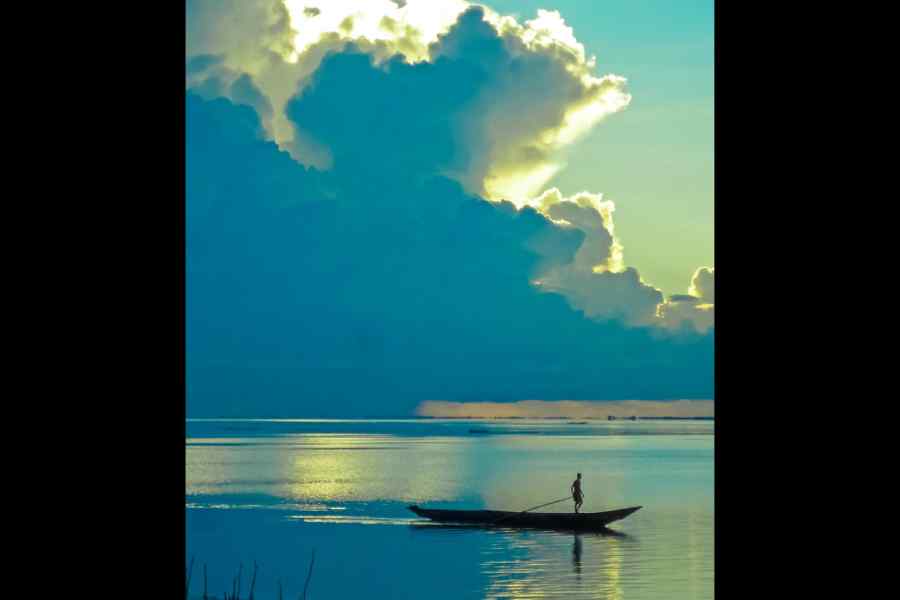SHADES OF BLUE: CONNECTING THE DROPS IN INDIA’S CITIES
By Harini Nagendra and Seema Mundoli
Viking, Rs 499
Shades of Blue is a rich storehouse of anecdotes and facts on India’s diverse water history and ecology. Sweeping in its scope, the authors collate a palimpsest of stories on urban water use, its governance conflicts, waterscape memories and our dependencies on and dichotomies with water; these are interspersed with their own experiences. These short vignettes provide fascinating insights into the scientific, hydro-social and ecological facets of waterbodies in India’s major cities and beyond, while etching concerns on their sustainability.
Rivers form the central focus, including a riveting account of the Brahmaputra being mapped by surveyor-spies posing as monks. The Yamuna’s deplorable state in Delhi due to continued appropriation for industrial and urban growth is critiqued. The huge investment in, yet the futility of, the Yamuna Action Plan reveals the difficult challenges for river restoration in India where riverfront development is often socially exclusive. Similar accounts of the Adyar river in Chennai, Sabarmati in Ahmedabad, Mula-Mutha in Pune and Mithi in Mumbai underscore the need to revive these riverine tracts. The dual existence of Indian rivers as physical entities and ethereal deities is evident throughout, for while the actual river may be polluted, it remains pure and undefiled as the benevolent goddess to be worshipped.
Alongside rivers, many cities are dependent on tanks, ponds and wells. The iconic Lake Pichola and its island palaces in Udaipur attract tourism and revenue; yet this threatens their ecological well-being. The architecturally astounding stepwells or vavs of Gujarat typify India’s traditional water-harvesting systems and need restoring as heritage sites. Urban sprawl in Bengaluru has consumed many old lakes and tanks; these low-lying locations become waterlogged during rains. Chennai has experienced contrasting periods of severe drought and incessant rain and floods, affecting millions. Annual floods are now de rigueur in Mumbai, halting the city on its tracks. The destruction of these cities’ traditional waterscapes has heightened their environmental vulnerability, inducing greater risk of natural disasters.
The remarkable East Calcutta Wetlands clean the city’s sewage and provide inexpensive fresh produce, making Calcutta an ecologically-subsidised city. Repeated encroachment of this Ramsar site has diminished its ecosystem services. Beels and wetlands along the Brahmaputra sustain Guwahati and house rich biodiversity but are threatened by urban development. Human-animal conflicts have become commonplace along rivers. The decline of Gangetic river dolphins or reports of crocodiles invading Vadodara during floods arise from riparian habitat loss. Unchecked water contamination can engender antibiotic resistant superbugs while microplastic pollution in rivers poses new threats.
Urban India’s unquenchable thirst has spurred large dam construction and furthered river interlinking projects, which raise multiple ecological concerns and are not socially equitable. The Tehri and Narmada dams have displaced many Dalit and tribal communities. The Kaveri and Krishna water-sharing disputes have long histories, sometimes with violent consequences. The loss of pristine waterscapes in one’s neighbourhood also induces solastalgia, the lingering feeling of loss for the home that once was.
Hearteningly, Harini Nagendra and Seema Mundoli contend that all is not lost and highlight numerous remarkable people and NGOs that continually strive to revive rivers and waterbodies and educate local communities. Rivers and waterscapes are also a storehouse of memories, leaving indelible imprints on local cultures and traditional folk arts, in poems, songs and films. The book provides a snapshot of these aspects and encourages the reader to delve into them further. Simply narrated yet evocative, this is a worthy compendium on India’s urban waterscapes and those vital blue drops that link all lives.











